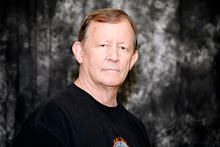Flash Metering System of the Canon EOS Digital Camera.
When Harold Edgerton invented the modern electronic flash in 1931, the world of photography was revolutionized. The principle behind the electronic flash is that when you charged up a capacitor or condenser and release the energy through a flash light bulb (A glass bulb containing inert gases), a split second burst of light will occur. This output of light occurs instantly when you send power to the flash light bulb. Therefore you can control this output of light through regulating the duration of electrical pulses to be sent to the flash light bulb. Before the advert of modern electronics, the duration of electrical pulses used to be controlled by a component called the thvristor. Today, modern electrical circuitry has taken over the function of this component.
Generally, there are two ways to control the quantity of light that enter the camera. The first way is adjusting the speed of the shutter which will affect how long the exposure time will be. The second way is through adjusting the aperture of the lens. This will determine how much light will enter the camera. Although you can use filter to block out additional light but here we will only talk about the fundamental ways of how to control flash exposure. Flash photography is an entirely different ball game because the flash pulse involves only micro seconds' display of light. As such, the mechanical shutter speed does not play any part in determining the amount of light which enter the camera except when the camera is in FP mode.
The shutter speed of a camera will only be effective if the light from the environment is a continuous source. However, flash light burst is so brief that the camera shutter hardly has time to register the change in the amount of light. As such to control the amount of light of a flash unit entering the camera;
You can change the size of the aperture of the lens. This is the physical diaphragm of the lens which controls the amount of light entering the lens.
Adjust the distance between the subject and flash unit. This method is an application of the laws of physics. The further an object is from a light source, the less illuminated the object is.
Use a diffuser on the flash unit to reduce the amount of light emitted by the flash unit. The main draw back to this method is the inconveniences of having to carry all these items around.
Lastly, we can affect the duration of the flash burst by adjusting the duration of the electrical pulse to the flash unit therefore controlling the amount of light produced. This is the primary ways today how we control electronic flash.
In conclusion, this is the main principle of flash metering. The precise measure of flash metering is difficult and it requires years of experience before anyone can accurately judge the right duration for the electrical pulse to be sent to the flash unit. Nowadays, we are fortunate as camera like the Canon EOS digital camera fulfill this function automatically with modern electronics.
About the Author
Tim Harris is a canon camera enthusiast. For tips on choosing and buying cameras, do check out Canon OS Camera website. Camera 40D Digital Rebel XTI 3D Blog
10 Simple Digital Photography Techniques
16 years ago

1 comment:
Thanks for the information.
http://www.photog-blog.net
Post a Comment